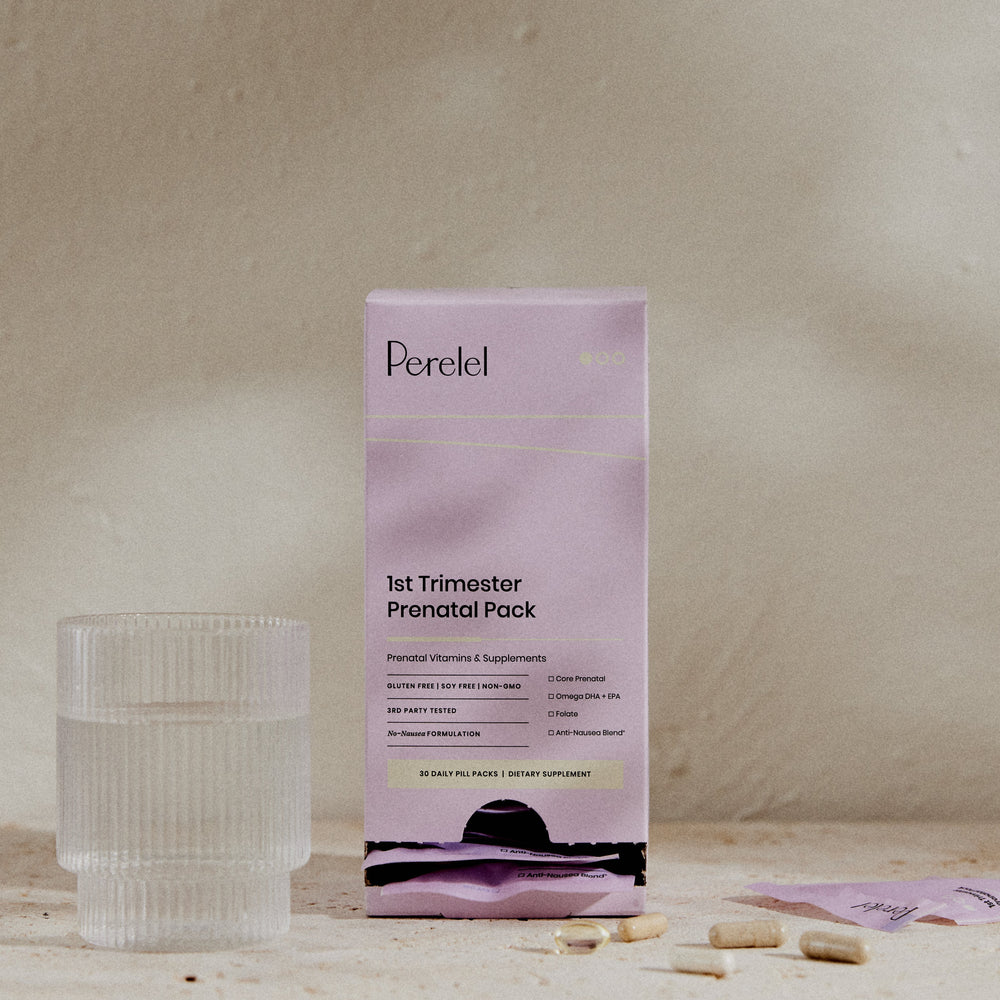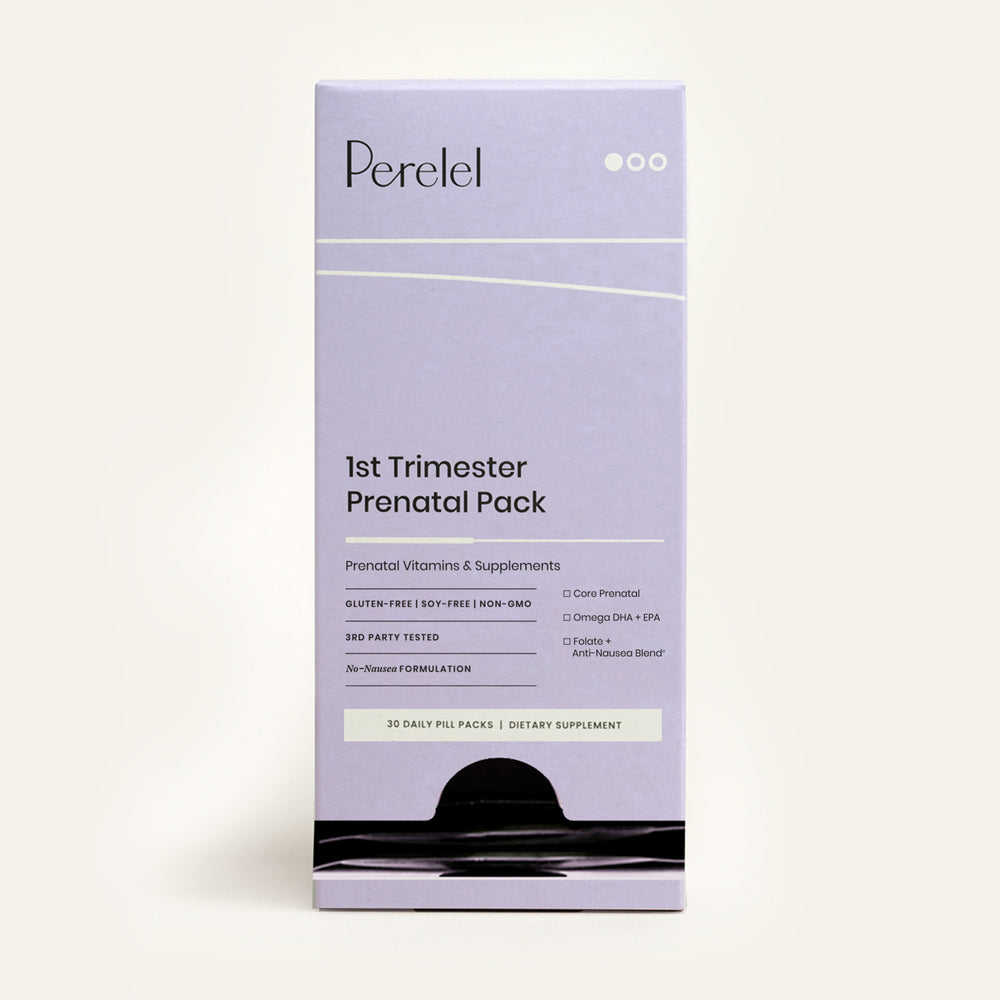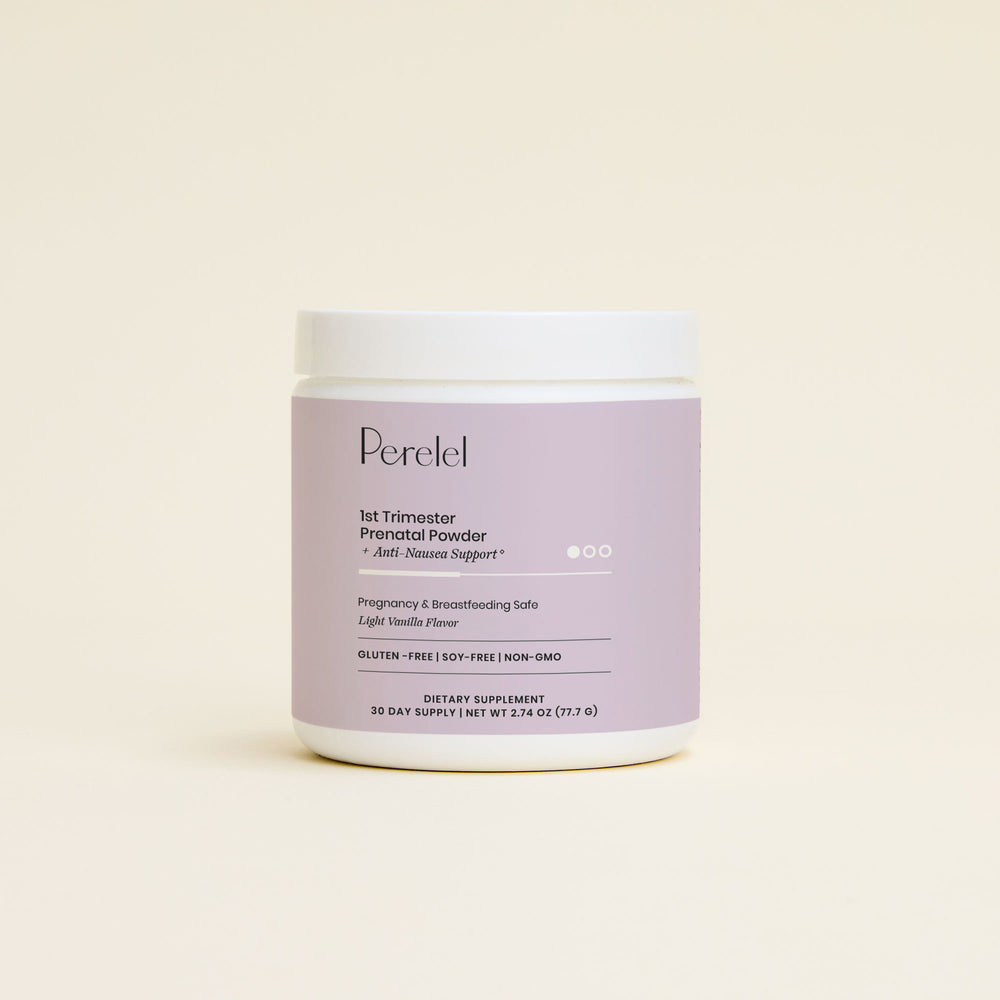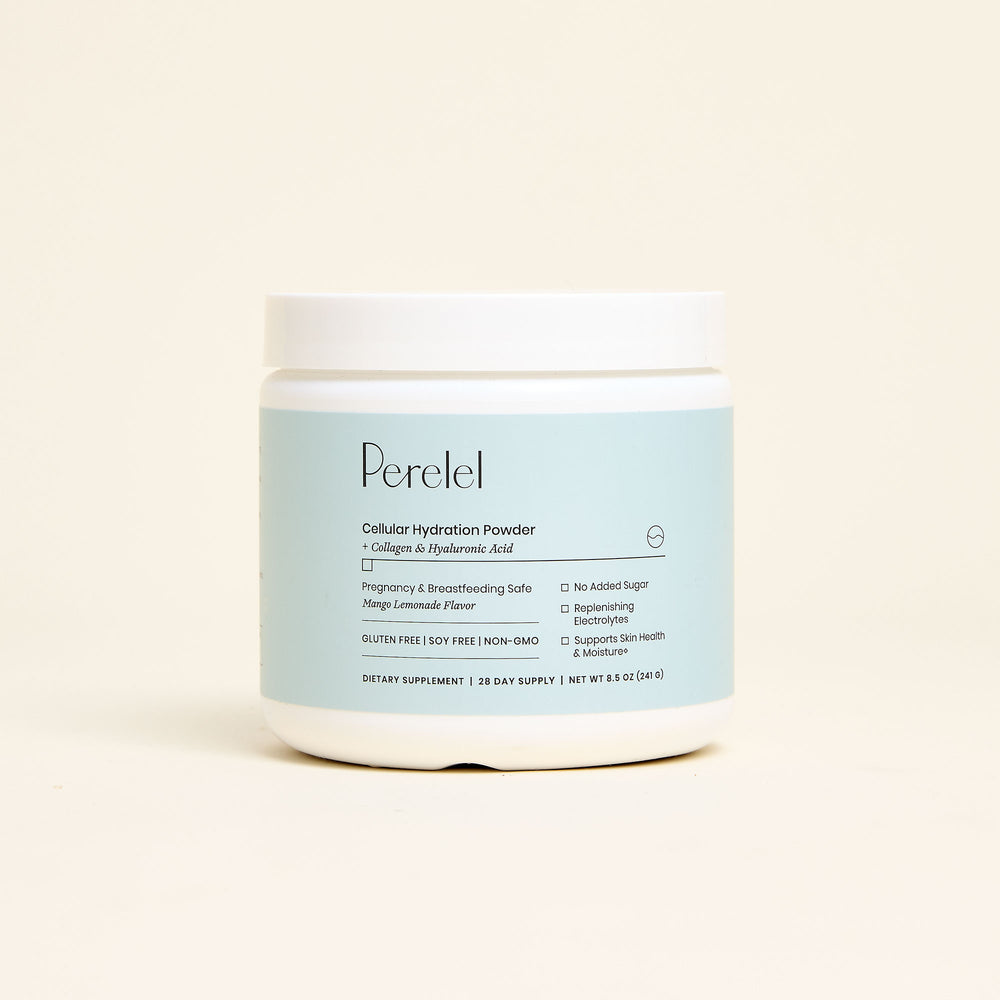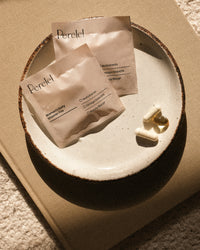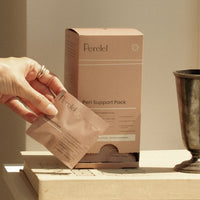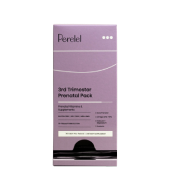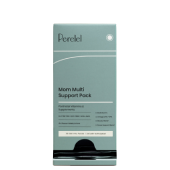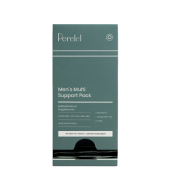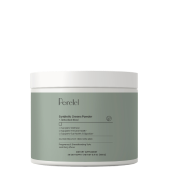By 11 weeks, you are nearing the end of the first trimester—and if your pregnancy symptoms are still raging, there’s soon to be a bit of reprieve with the second trimester incoming. Meanwhile, your baby is growing, with limbs fully formed, and genitals starting to differentiate¹ (it’s still too soon to determine the sex of the baby yet, but if it’s a girl, ovaries are made this week). At 2.5 months pregnant, here’s what you need to know:
How You’re Feeling at 11 Weeks
You might be feeling like you can actually feel a tummy grumble or that your appetite is coming back—that’s an encouraging sign that your morning sickness might be fading. If it’s still of concern, consider adding our 1st Trimester Prenatal Powder to your regimen in these last couple of weeks before all-day nausea subsides.
You also may be experiencing more gas, bloating, burping and general indigestion. This is a positive marker of progesterone working through your GI tract and relaxing muscles to help your body slow down and absorb maximum nutrients into your bloodstream and be passed on to the baby. The feeling is characterized by an uncomfortable fullness that correlates with your uterus growing, and crowding your stomach and intestines to make room for everything inside but also applying pressure to your digestive tract.
Look below for a more in-depth breakdown of these subtle shifts:
-
Morning sickness might soften. If that constant queasiness is finally dialing down, welcome to a changing rhythm. A little grumble of hunger is often one of the first signs that nausea is loosening its grip. While you still might need frequent, gentle meals, know that this phase—though fierce—is nearing its end.
-
Bloating, gas, digestive discomfort. Progesterone continues to slow down your GI tract—yes, that relaxation aids nutrient absorption, but it might also leave you feeling full, crampy, or gassy. Add an expanding uterus nudging your stomach and intestines into the picture, and boom—you’ve got the perfect storm of upper-abdominal fullness. This is normal, albeit annoying, and a sign your body is optimizing nourishment for two.
-
Ligament pulls and emotional swells. That tug at your lower belly? It’s your round ligaments stretching and adapting. And emotional surges—moments of unexpected tears or belly laughs—are just your fluctuating hormones, doing their work. Be gentle with yourself.
-
Bump realities. Some people may notice early signs of a belly “pop,” but in most, the uterus is still nestling low in the pelvis, or hidden by bloating. If you can feel something when lying on your back and pressing just above the pelvic bone, that’s your growing uterus. It won’t be long before it begins to visibly rise.
What’s New With Your Baby
Your little one is undergoing breathtaking development this week.
-
Size of a lime, or about 2 to 2.5 inches long and roughly 0.33 to 0.5 ounces. That's roughly the size of a lime, according to The Bump.
-
Skin is still translucent, but beneath it, bones, organ structures, and even the beginnings of circulatory pathways are forming. Fingers and toes have separated, nails and tooth buds are emerging, and the baby can open and close their mouth.
-
Brain is building both hemispheres, aka the seats of logic and language are being set up and will be the foundation for future cognitive milestones.
-
External genitalia begin their delicate differentiation. While it’s too soon to reliably determine sex via ultrasound, the groundwork is in place. Fun fact: many providers can now detect your baby’s heartbeat with a Doppler stethoscope at this stage.
-
Subtle prenatal motions: Data from focused ultrasounds suggest that your baby is moving—stretching, curling, maybe even practicing a few tiny somersaults. You won’t feel these yet, but movement is happening.
These developments mark a pivotal transition: from pure organ formation into the graded pace of growth and muscular development. It’s an exciting week of change.
Shop the Article:
Your Week 11 To-Do List
1. Book or confirm your 11-week check-in and ultrasound.
This is often the week for your nuchal translucency (NT) ultrasound, or combined first-trimester screen. It assesses risk for chromosomal conditions and can include blood tests like NIPT, along with the neck-fold measurement of the fetus. It’s a foundational milestone in your prenatal care.
2. Stay nourished and hydrated.
As your blood volume rises and your baby’s growth accelerates, your body needs a steady stream of nutrients—without the energy crashes. Our 1st Trimester Prenatal Pack was designed by OB/GYNs to meet these increased demands, with bioavailable folate for healthy neural tube development, gentle iron to support expanding blood supply, and omega-3s for early brain and eye health. Pair it with small, balanced meals to help curb nausea and stabilize blood sugar, and sip on water, herbal tea, or electrolyte-rich drinks throughout the day. This way, you’re fueling both you and your baby with exactly what you need—right when you need it.
3. Gentle movement = big benefits.
Prenatal yoga, walking, or swimming remain excellent allies. They soothe digestion, ease tension, and support mood. Your body is incredible—moving right now is a kind act of affirmation to it.
4. Support your digestive system.
Bloating and slowed digestion? Prioritize fiber-rich whole foods (if tolerated), and nudge digestion along with water, warm beverages, or gentle walks. If heartburn strikes, talk with your provider about safe options like antacids or dietary tweaks.
5. Prioritize self-care.
Between changing hormones and the anticipation of bigger scans ahead, emotional stability can feel fragile. Ground yourself with deep breathing, journaling, or sharing thoughts with a supportive friend or partner.
6. Watch for concerning symptoms.
While most weeks flow smoothly, be alert to:
-
Heavy bleeding or sharp cramps
-
Severe nausea or inability to keep fluids down
-
Painful urination or fever
These may signal dehydration, infection, or other issues that benefit from care right away.
7. Take note: dental care is still prenatal care.
Gums can be sensitive during pregnancy, and increased blood flow may make brushing feel tender. Use a soft toothbrush and floss gently. Consider keeping your dental check-up in your plan if it’s not done already.
8. Connect mindfully with your baby.
You may not “feel” movements yet, but your baby is already practicing them. Hold space each day—a moment of belly awareness, breath, visualization. These small ritual breaths help foster a deeper, intuitive connection.
Looking Ahead
By Week 12, many of the more relentless symptoms (think: nausea, fatigue, bloat) will start to ease. Your belly may begin to reveal its gentle curve. In Week 13 and beyond, growth accelerates and energy often returns. For now, you're still building internal strength, laying the foundation for the sweeter weeks ahead.
References
“11 Weeks Pregnant,” Babylist, Medically reviewed by Dr. Alyssa Dweck, updated Aug. 1, 2025, babylist.com/hello-baby/11-weeks-pregnant. Babylist
“Week 11,” What to Expect, whattoexpect.com/pregnancy/week-by-week/week-11.aspx.
“Week 11,” NHS Start for Life (week-by-week pregnancy guide), nhs.uk/start-for-life/pregnancy/week-by-week-guide-to-pregnancy/1st-trimester/week-11. nhs.uk
“Pregnancy: Week by Week—In Depth,” Mayo Clinic, mayoclinic.org/healthy-lifestyle/pregnancy-week-by-week/in-depth/pregnancy/art-20047208.
“Pregnancy Symptoms, Explained,” Babylist, babylist.com/hello-baby/pregnancy-symptoms-explained.
“Common Tests During Pregnancy,” Johns Hopkins Medicine, hopkinsmedicine.org/health/wellness-and-prevention/common-tests-during-pregnancy.
https://www.smababy.co.uk/pregnancy/week-by-week/11-weeks-pregnant?utm_source=chatgpt.com
This article is for informational purposes only. It is not, nor is it intended to be, a substitute for professional medical advice, diagnosis, or treatment and we recommend that you always consult with your healthcare provider. To the extent that this article features the advice of physicians or medical practitioners, the views expressed are the views of the cited expert and do not necessarily represent the views of Perelel.

